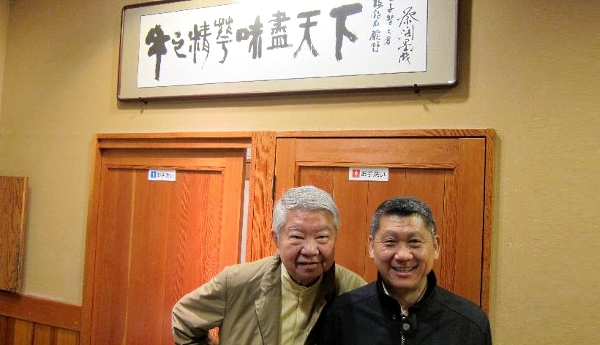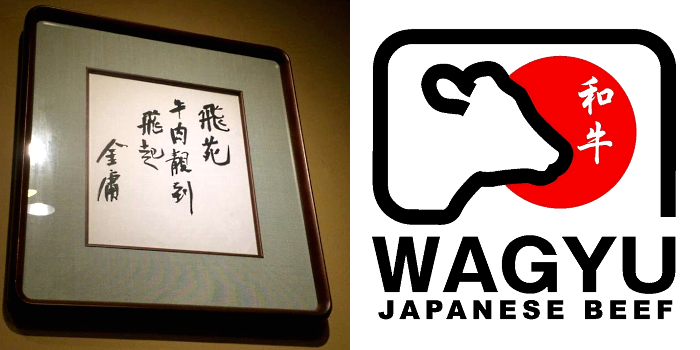
By Lee San
When some of the customers register for our Japan tours, they specify that they don't take beef. However, after they arrive in Japan, they actually don't mind eating wagyu. So, what makes wagyu so appealing that these people would change their dietary habit? Because they believe in what the tour guide has said, that wagyu will instantly melt in the mouth!
Similarly, the milk served on the buffet breakfast table at Japanese hotels and even the wagyu skewers at dinner are always snatched up by tourists in no time. Why? Let the tour guide explain to you!
Have you seen a 10,000 yen note? Fukuzawa Yukichi is the face on it. He was seen as a great thinker, economist and educator in modern-day Japan. He founded the famous Keio Private University in 1858. Later towards the end of the Tokugawa Period and during the Meiji Restoration in 1868, Fukuzawa was playing a pivotal role, proposing a British-style Parliament and advocated a Eurocentric policy. Among his achievements were to introduce economics from the English-speaking world to Japan, along with double-entry book-keeping and the concept of modern insurance. He even boldly introduced Western beef and milk to Emperor Meiji, who was vegetarian.
Like many other Japanese, Fukuzawa was also a vegetarian. During one of his three journeys to the West, he fell ill, and the Western doctor told him his body was too weak and he needed to take some meat for protein. Fukuzawa had no choice but to break the precept.
Upon his return to Japan, Fukuzawa explained to the Emperor: The Westerners are physically stronger because they eat beef and drink milk!
As a matter of fact, the Japanese people had been abstaining from meat for the 1,200 years before that.
After listening to the scientific proposals by Fukuzawa and other people, and considering the country's health and military needs, the Emperor agreed to lift the "meat ban" that had been in place for so many generations.
Following the royal decree, Japan began to improve on its quality of poultry, and brought in foreign beef and dairy cattle for breeding in Japan. It was said that in the bustling Ginza area near to the Palace, one whole yellow cow could be sold off each day. Suddenly there emerged a craze among the Japanese people to take beef and Western meals. Since then the average height of the Japanese rose gradually from 1.50 meters to 1.65 meters, and even to 1.75 meters today.
As if that's not enough, because of beef and milk, the Japanese easily defeated Qing dynasty China and the Russians, and occupied much of Asia-Pacific during WWII.
While leading the nation in beef consumption, Emperor Meiji also encouraged the people to develop the livestock industry to achieve the country's food security goals.
In 1939, Japanese breeders successfully developed the original wagyu species Tajiri-go (田尻号) from Tajima beef. In less than 50 years, the Japanese developed four new improved wagyu species from Tajiri-go, namely Kuroge wagyu that made up almost 90% of all wagyu in Japan, the Japanese Brown, the Shorthorn, and the Japanese Polled. Today, Japan boasts a total of 150 wagyu species.
That said, the Japanese remain very particular about wagyu lineage. You can cross breed in any way but must never deviate from the original Tajiri-go. We have yet to find out whether there is any blood relationship between Australian wagyu and the true Japanese wagyu.
Anyway, the key lies with the attitude and spirit of cattle breeders all across Japan: focused, professional with a caring heart. The Japanese craftsmanship is unique in the world in its commitment to honorability and branding.

In addition to the environment and the use of organic feed and vitamin C hay, Japanese cattle farmers also manually massage their cows on a regular basis for firmer and more evenly distributed fat. They even feed the animals with beer to improve the digestive system.
A wagyu cow will normally grow to a weight of 800kg in about 30 months, when the quality of meat far supersedes that of European, American or Australian beef, with sweet and tender meat texture as well as superior aroma to become the most supreme ingredient in the kitchen.
Meanwhile. Japanese milk is also known for its thick and strong fragrance. Having traveled across much of the world, I would say I've never tasted anything as pure and as satisfying as "Snow Brand" milk.
In order to get to know wagyu better, I've made arrangements for my group members to visit the supermarket at Isetan's main store in Shinjuku (cattle farms are out of bounds to visitors!). To the shock of everyone, each strip of wagyu beef is tagged with a "birth certificate" that clearly records the cow's lineage, name of breeder, place of birth, marbling score, A2-A5 grading, etc. Just a simple card, but you get to see the cow's DNA in detail!
Of course, wagyu's pricing is something extremely complicated. First of all, a wagyu cow is purchased with the highest bidding price at the auction market, and then the retailer will price individual parts of the body accordingly. An A5 grade wagyu for teppanyaki is typically priced upwards of RM400 per 100g, and this means there is always more superior and exorbitantly priced wagyu you can choose from.
In wagyu grading, Grade A wagyu has meat to fat thickness ratio of at least 72%, for Grade B at least 69%, and Grade C below 69%.
Additionally, the marbling and firmness are rated from 1 to 5. Nevertheless, what is often overlooked by an average tourist but is of tremendous importance is the distribution of fat, ie the beef marbling standard, BMS (from 1 to 12), the higher the more expensive, as the meat will melt more instantly in the mouth. Wakarimashitaka (understand)?
Someone says among the variants of A5 beef, Matsusaka beef is the best in the world, as it melts instantaneously in the mouth. Kobe beef is globally known for its uniformly distributed fat and lean meat, while Omi beef boasts delicate meat texture.
But for me, Sandagyu, Maesawa, Yonezawa, Tajima, Hida, Ishigaki and Tokushima are all excellent options, too. These wagyu variants range from 5 to 8 in BMS and are quite reasonably priced.
As for A3 and A4 wagyu, I would suggest that you try the Shiraoi and Tokachi wagyu from Hokkaido. I'm sure you'll be completely conquered by them!
Moo…if I were a cow in my next life, I hope I would be a wagyu beef, hahaha…
P/S: This tour guide really likes "cow talk", huh! But, don't you miss teppanyaki?
(Lee San is Founder and Group Executive Chairman of Apple Vacations. He has traveled to 132 countries, six continents, and enjoys sharing his travel stories and insights. He has also authored five books.)
ADVERTISEMENT
ADVERTISEMENT


































